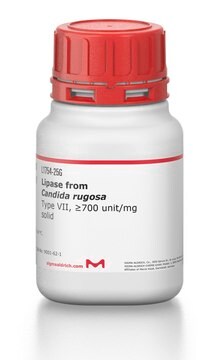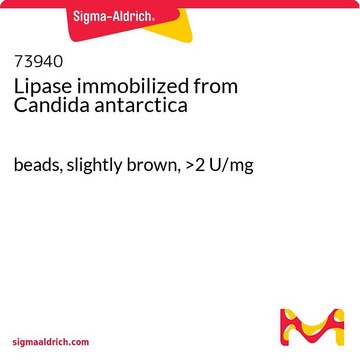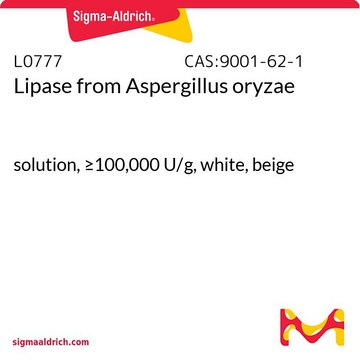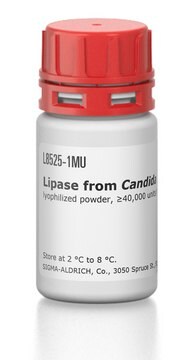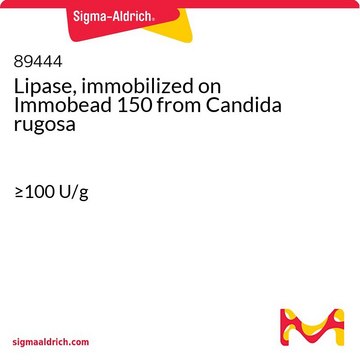L4777
Lipase acrylic resin
≥5,000 U/g, recombinant, expressed in Aspergillus niger
Sinonimo/i:
Novozyme 435
About This Item
Prodotti consigliati
Ricombinante
expressed in Aspergillus niger
Livello qualitativo
Forma fisica
solid
Attività specifica
≥5,000 U/g
Caratteristiche più verdi
Waste Prevention
Design for Energy Efficiency
Learn more about the Principles of Green Chemistry.
sustainability
Greener Alternative Product
Matrice
macroporous acrylic resin
applicazioni
diagnostic assay manufacturing
Categoria alternativa più verde
Temperatura di conservazione
2-8°C
InChI
1S/C11H9N3O2.Na/c15-8-4-5-9(10(16)7-8)13-14-11-3-1-2-6-12-11;/h1-7,16H,(H,12,14);/q;+1/b13-9-;
QWZUIMCIEOCSJF-CHHCPSLASA-N
Descrizione generale
Applicazioni
- as a catalyst to carry out the esterification of pLACT with butyric acid
- as an additive in fully hydrogenated canola oil (FHCO) and high oleic sunflower oil (HOSO) blend for enzymatic interesterification
- to study its effect on the degree of oleic acid conversion upon esterification
Azioni biochim/fisiol
Altre note
Avvertenze
Danger
Indicazioni di pericolo
Consigli di prudenza
Classi di pericolo
Resp. Sens. 1
Codice della classe di stoccaggio
11 - Combustible Solids
Classe di pericolosità dell'acqua (WGK)
WGK 1
Punto d’infiammabilità (°F)
Not applicable
Punto d’infiammabilità (°C)
Not applicable
Certificati d'analisi (COA)
Cerca il Certificati d'analisi (COA) digitando il numero di lotto/batch corrispondente. I numeri di lotto o di batch sono stampati sull'etichetta dei prodotti dopo la parola ‘Lotto’ o ‘Batch’.
Possiedi già questo prodotto?
I documenti relativi ai prodotti acquistati recentemente sono disponibili nell’Archivio dei documenti.
I clienti hanno visto anche
Il team dei nostri ricercatori vanta grande esperienza in tutte le aree della ricerca quali Life Science, scienza dei materiali, sintesi chimica, cromatografia, discipline analitiche, ecc..
Contatta l'Assistenza Tecnica.
